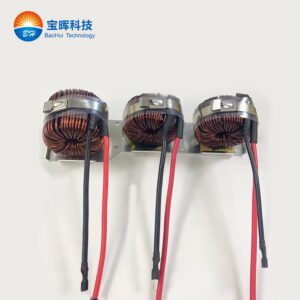A high-frequency transformer is used to convert power and at the same time to ensure proper voltage matching and provide galvanic isolation. The primary differentiator from grid transformers is the operating frequency, which makes it possible to reduce the size of the converter.
Transformers of this type are used in high-frequency intermediary systems where galvanic isolation of circuits and/or a large difference of the processed voltages are required, e.g. in railway converters or car chargers. Due to their high operating frequency, they allow for miniaturization of the energy converter.
Typical operating systems for high-frequency transformers are hard commutation resonant converter systems and flyback systems.

Typical parameters:
- Primary voltage: ≤ 1,500 V
- Secondary voltage: ≤ 1,500 V
- Insulation class: B, F, or H
- Protection rating: IP00-IP67 (not applicable to leads)
- Frequency > 10 kHz
Primary, secondary, double, reinforced insulation.
High-frequency transformers are manufactured with toroidal, EI, and block cores. Due to their smaller size compared to grid transformers, they are usually encased in resin to improve the cooling conditions.








